As the leaves turn golden, the temperature cools down and the nights get longer, a fascinating sight can be witnessed across the skies – the migration of birds.
October marks the peak time of year for bird migration, as millions of birds take to the air on their epic journeys to warmer climates, in search of more plentiful food sources and breeding grounds.
With their aerial acrobatics and vibrant colors, birds make autumn skies come alive, as they sweep through forests, fly over fields and flock around lakes and rivers before continuing their long journey south.
Let’s delve into the world of birds in October and learn more about their incredible migration patterns, behavior and adaptations.
1. Common Crane
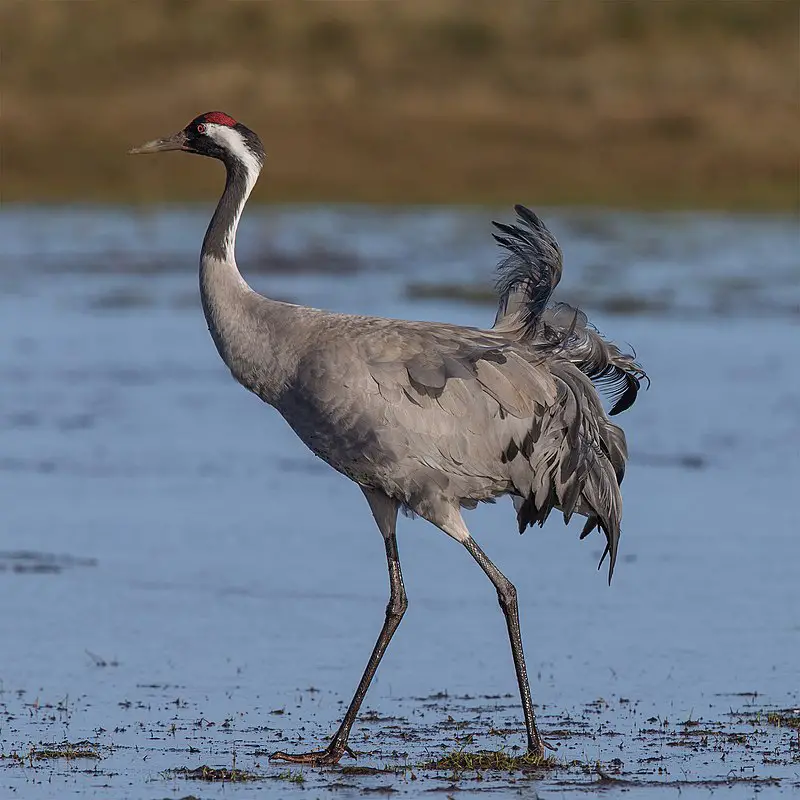
The Common Crane is a beautiful bird with grey plumage and white feathers on its head, neck and wings. It stands up to 1m tall and has a wingspan of around 2m.
This species is found in Europe as well as parts of Asia, Africa and the Middle East. Their diet consists mainly of plants such as grasses, grains, insects and small invertebrates like worms or molluscs.
The crane typically forages by walking slowly through fields looking for food items that it can pick out from the ground using its long beak.
During breeding season they gather together in large flocks which are an impressive sight to behold.
These birds have been known to live up to 25 years in captivity; however their lifespan is likely shorter when living wild due to predation risk from eagles or foxes amongst other threats.Scientific classification:
| Kingdom | Animalia |
| Phylum | Chordata |
| Class | Aves |
| Order | Gruiformes |
| Family | Gruidae |
| Genus | Grus |
| Species | G. grus |
Also Featured In: Native Birds Of Germany, Swamps Birds You Should Know
2. Common Chiffchaff
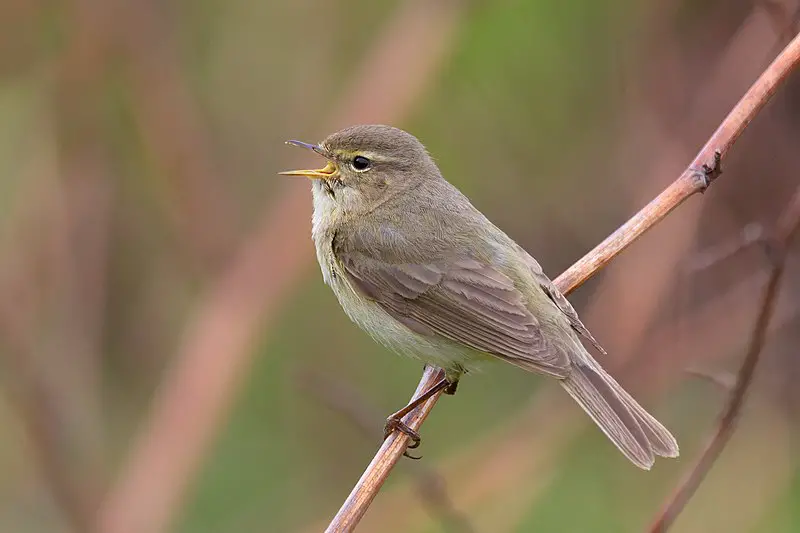
The Common Chiffchaff is a small bird found in northern and temperate Europe and the Palearctic.
It has greenish-brown plumage on its upper parts, off-white feathers beneath, and gets its name from an onomatopoeic call that resembles “chiff chaff”.
This migratory passerine breeds in open woodlands during summer before heading to southern Asia, western Europe and North Africa for winter.
A frequent visitor at gardens with good insect supplies, it feeds mainly on insects such as flies, beetles or ants which are caught by gleaning foliage or hawking aerial prey.
Despite being one of Britain’s most common birds – estimated numbers between 6–9 million pairs – their population numbers have declined over recent years due to habitat destruction caused by climate change.Scientific classification:
| Kingdom | Animalia |
| Phylum | Chordata |
| Class | Aves |
| Order | Passeriformes |
| Family | Phylloscopidae |
| Genus | Phylloscopus |
| Species | P. collybita |
Also Featured In: Birds of United Kingdom, Most Common Songs Birds that Live around You
3. Red-Throated Loon
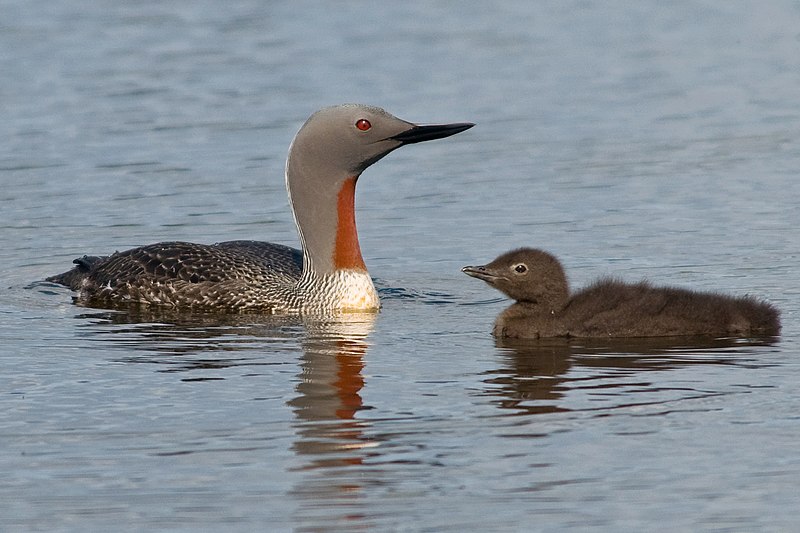
The Red-throated Loon is a migratory bird found in the northern hemisphere, with its breeding grounds primarily located in Arctic regions and wintering spots near coastal waters.
With an average length of 55 – 67 cm (22 – 26 inches), it’s the smallest member of the loon or diver family.
Its namesake comes from its bright red throat patch which contrasts against its white underside and grey back.
This species has adapted to life on icy seas; they are strong swimmers with powerful wings for long flights over open water when migrating seasonally.
Their diet consists mostly of fish but can also include crustaceans, molluscs, amphibians and insects depending on availability.Scientific classification:
| Kingdom | Animalia |
| Phylum | Chordata |
| Class | Aves |
| Order | Gaviiformes |
| Family | Gaviidae |
| Genus | Gavia |
| Species | G. stellata |
Also Featured In: Native South Korean Birds, Turkey Birds You Should Know
4. Brambling
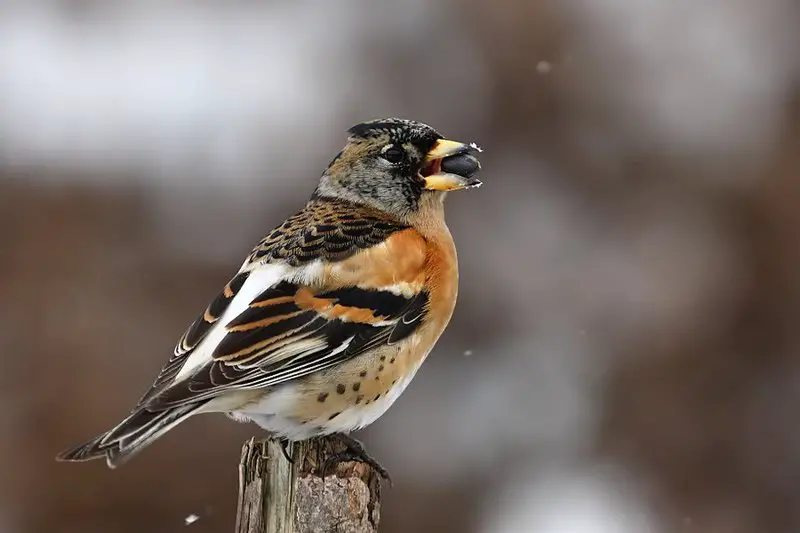
The Brambling is a small passerine bird that belongs to the finch family. It has many names such as ‘Cock o’ The North’, and ‘Mountain Finch’.
This species is widespread in areas, often seen in flocks during its migration periods.
In 1758 Linnaeus included this species under its current scientific name Fringilla montifringilla, which literally translates to “mountain fringe”.
Its feathers are mostly black with white markings on their wings and chest area.
They have short beaks used for cracking open seeds while they feed on insects and berries in summer months; however they primarily eat grains during winter seasons.Scientific classification:
| Kingdom | Animalia |
| Phylum | Chordata |
| Class | Aves |
| Order | Passeriformes |
| Family | Fringillidae |
| Subfamily | Fringillinae |
| Genus | Fringilla |
| Species | F. montifringilla |
Also Featured In: Birds of Belgium, Autumn Birds You Should Know
5. Snow Bunting
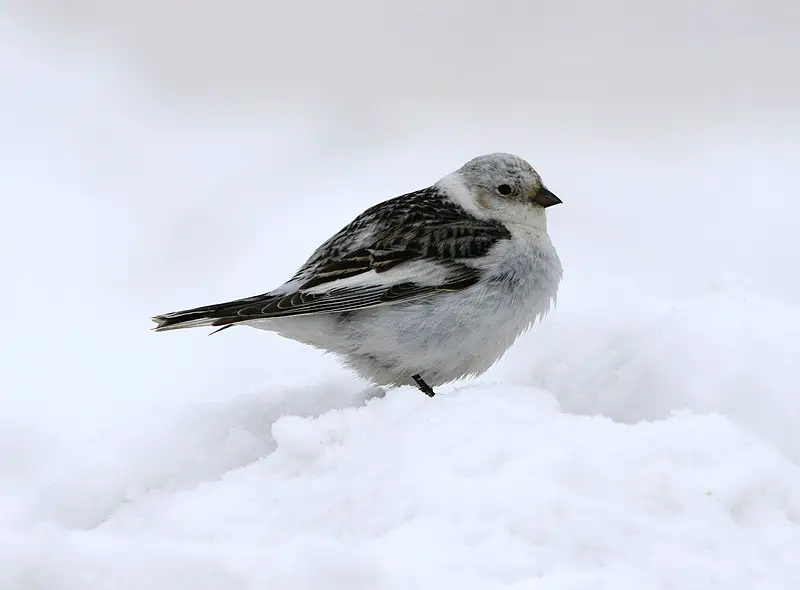
The snow bunting is a small and colourful passerine bird found in the Arctic regions of the northern hemisphere.
With its bright white feathers, black markings on its wings and tail, it stands out amongst other birds that inhabit these cold climates.
This species has adapted well to surviving in this harsh environment; they nest under boulders or rocks so their eggs are shielded from predators and blizzards alike.
They feed mainly on insects during summer months but switch to seeds when winter arrives as they seek food sources which will not freeze over with ice.
The snow bunting is an important part of the local ecosystem due to providing sustenance for larger animals such as foxes and owls who rely upon them for survival throughout wintertime.Scientific classification:
| Kingdom | Animalia |
| Phylum | Chordata |
| Class | Aves |
| Order | Passeriformes |
| Family | Calcariidae |
| Genus | Plectrophenax |
| Species | P. nivalis |
Also Featured In: Iceland birds, Most Common Winter Birds
6. Swamp Sparrow
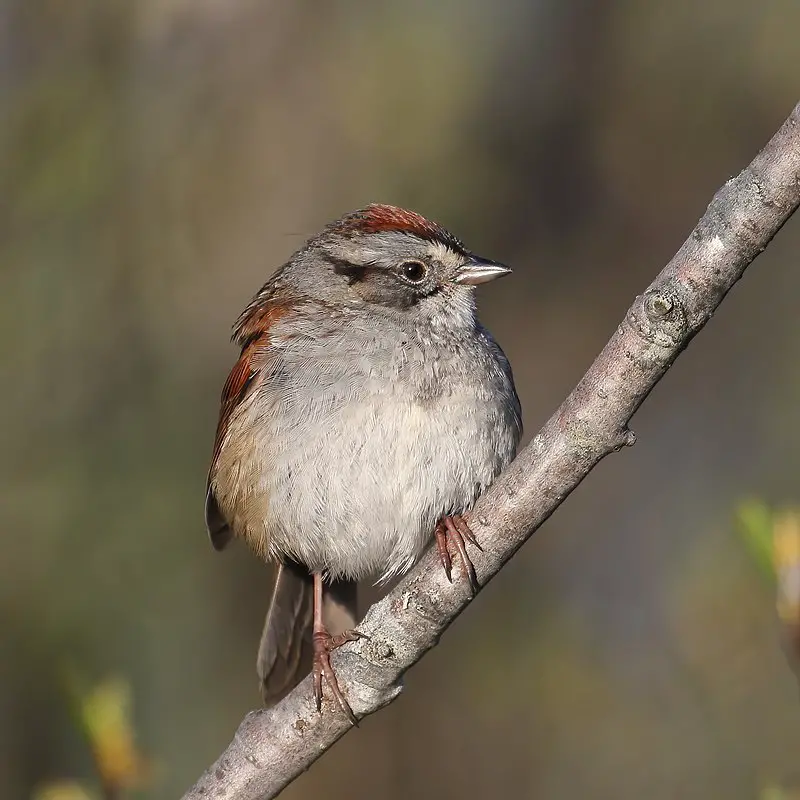
The Swamp Sparrow is a medium-sized bird found in the New World, closely related to the Song Sparrow.
It has rusty and buff streaked upperparts with an unstreaked gray breast, light belly, white throat and striking rusty wings.
The male’s head features a rust-coloured cap while both genders have grey faces with dark lines through their eyes.
Their bills are short and conical in shape which helps them feed on seeds as well as grains easily from ground or low vegetation.
They usually appear solitary but can also be seen foraging together near waterbodies such as swamps or marshes during migration season.Scientific classification:
| Kingdom | Animalia |
| Phylum | Chordata |
| Class | Aves |
| Order | Passeriformes |
| Family | Passerellidae |
| Genus | Melospiza |
| Species | M. georgiana |
Also Featured In: Sparrows Species, Brown Birds that are Found in Mississippi
7. European Robin
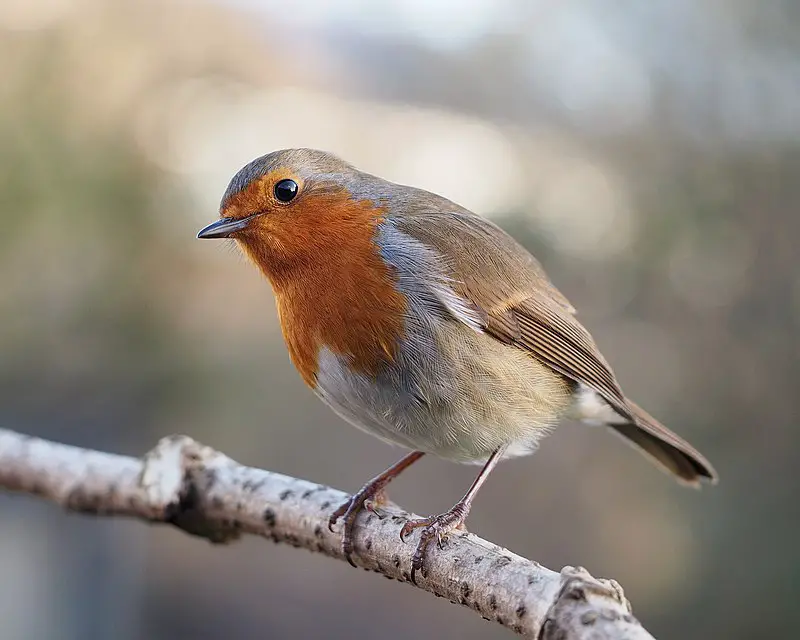
The European robin, also known as simply robin or robin redbreast, is a small insect-eating bird belonging to the chat subfamily.
This bird species can be found across Europe, extending east to Western Siberia while inhabiting North Africa.
The bird species is relatively sedentary and is found in most of its range, except for the far north.
Measuring around 12.5-14.0 cm, this bird is commonly known for its distinctively red breast feathers.
As an insectivorous passerine bird, the European robin mainly feeds on insects to sustain its energy.
Given its widespread range throughout Europe and continuous presence in certain parts of the world, the European robin is widely recognized for its distinct physical appearance, singsong voice, and tiny size.Scientific classification:
| Kingdom | Animalia |
| Phylum | Chordata |
| Class | Aves |
| Order | Passeriformes |
| Family | Muscicapidae |
| Genus | Erithacus |
| Species | E. rubecula |
Also Featured In: Italian Birds You Should Know, Ukrainian Birds You Should Know
8. Common Firecrest
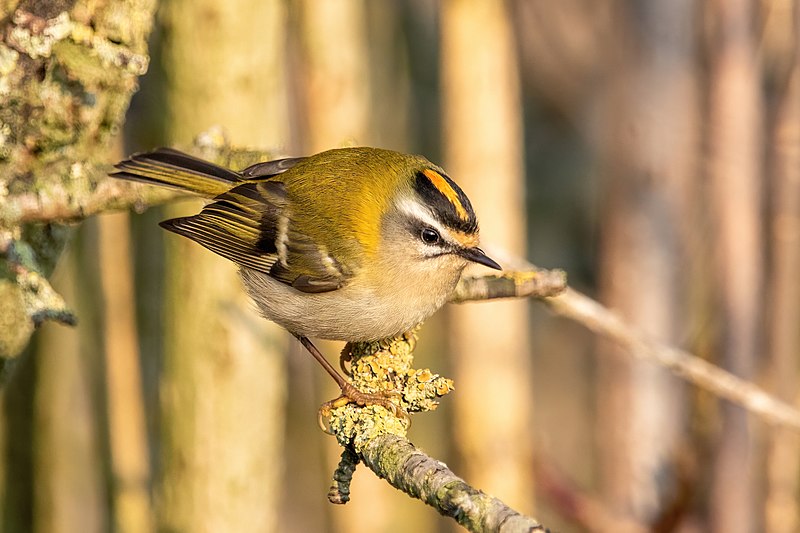
The Common Firecrest, a tiny bird from the kinglet family, is found in temperate Europe and northwest Africa. It is known for its bright orange and black striped crest which distinguishes it from other kinglets.
This bird is partially migratory, with those in central Europe moving southwards during winters.
The Firecrest breeds in different parts of its range and has a unique subspecies in the Balearic Islands and North Africa.
Despite being small, this bird has a melodious song and can be heard singing during the breeding season.
The Common Firecrest is a fascinating bird that adds color and charm to the forests and woodlands it inhabits.Scientific classification:
| Kingdom | Animalia |
| Phylum | Chordata |
| Class | Aves |
| Order | Passeriformes |
| Family | Regulidae |
| Genus | Regulus |
| Species | R. ignicapilla |
Also Featured In: Flight Birds You Should Know, Birds of Norfolk